Newsletter: Essential Arts: How Roberto Gil de Montes captures our unsettled state
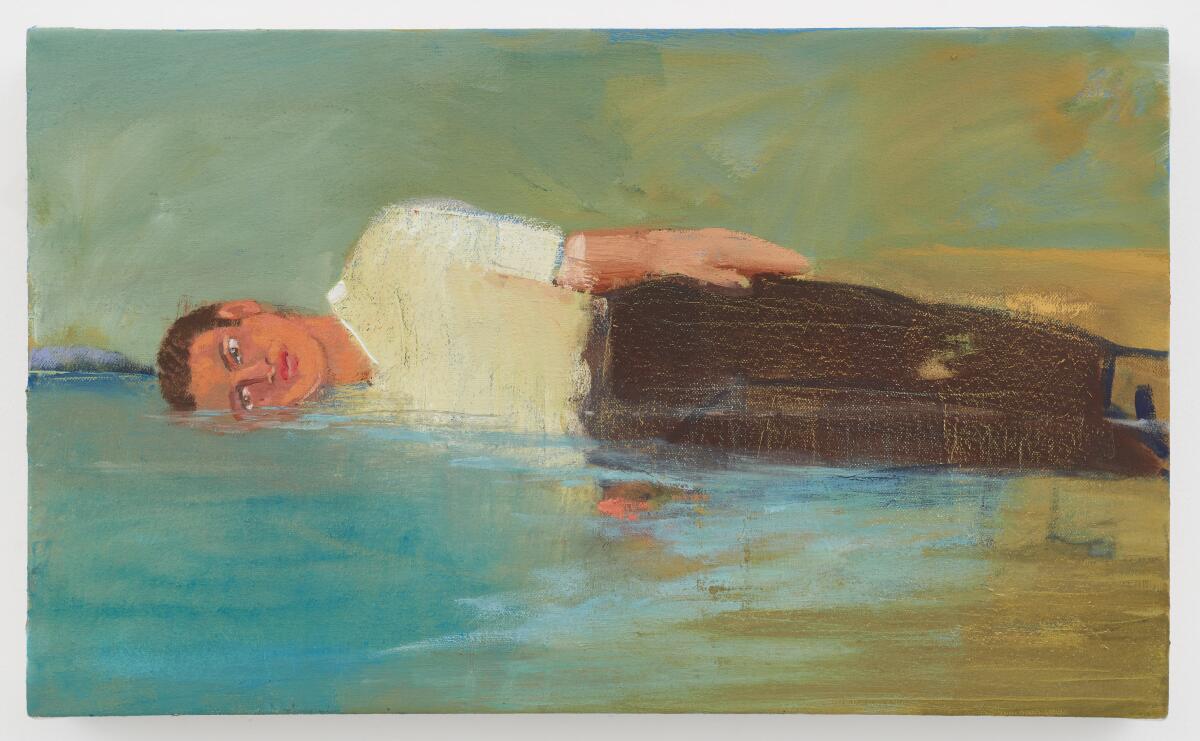
The best art I’ve seen all week is this Gansito tamal. My journey into the dark underworld of Gansitos weirdness began with an office Slack convo about this Mexican comedic spoof of the Kardashians involving Gansitos. I’m Carolina A. Miranda, arts and urban design columnist for the Los Angeles Times, and my internet search history is trash. But this weekly culture newsletter is definitely high quality.
Capturing our distanced states
Early last year, when the presence of a novel coronavirus plunged the world into hasty quarantine, Roberto Gil de Montes says he was transported to the early days of another pandemic. “I remember AIDS,” he tells me via telephone from his home in Mexico, “going to visit friends and having to wear all of those masks and gear. That distance — it was something between us. It could be a wall or it could be a veil. It’s about being separated from people.”
This condition of apartness, of feeling unsettled and disembodied, is captured in a series of new paintings by the artist currently at Park View / Paul Soto in Los Angeles. Figures wash up on shores, drop from the sky or have their visages partly obscured by scrims or veils.
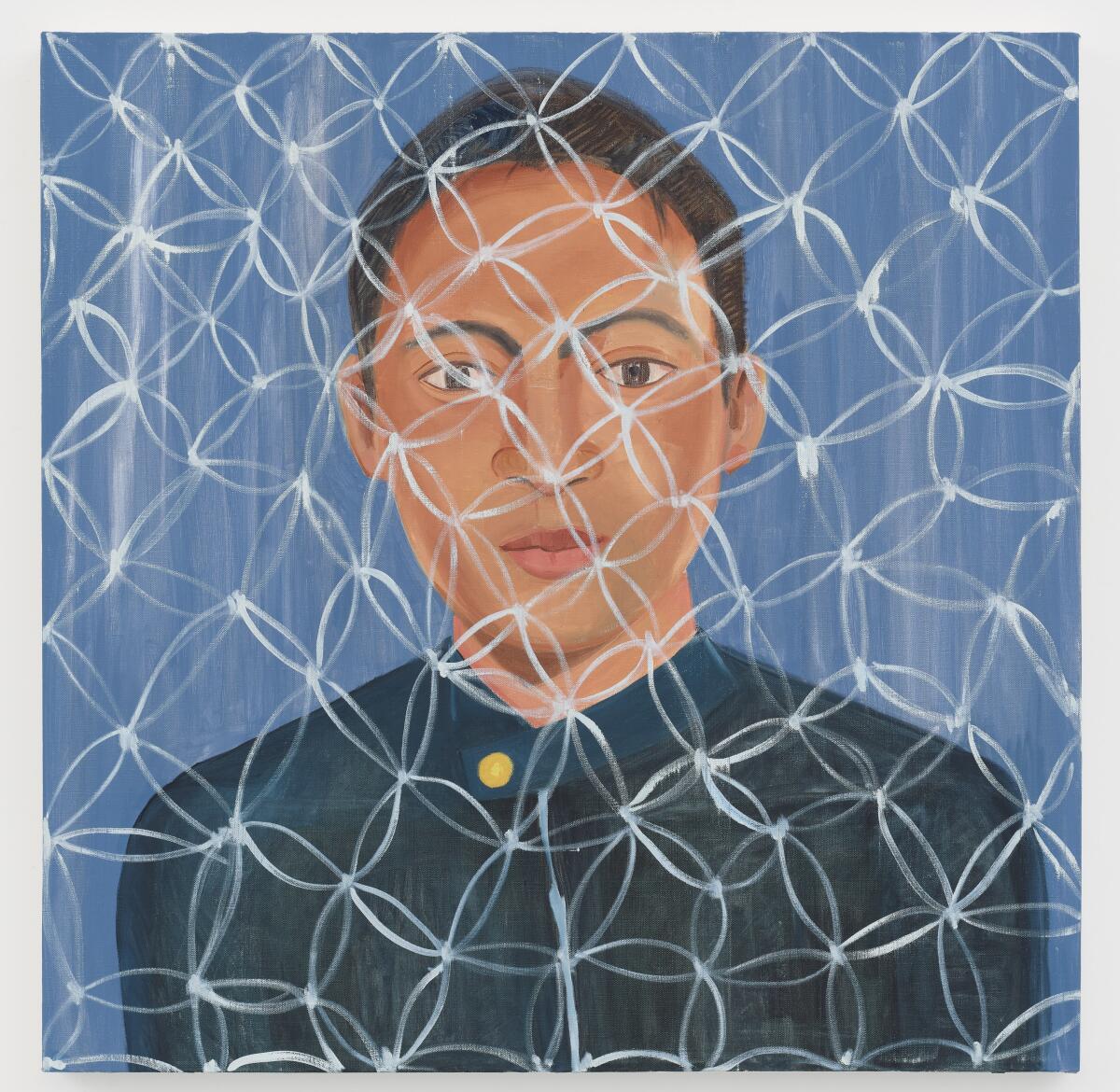
For Gil de Montes, 70, the works mark a return to the types of paintings he was making during that previous pandemic. (The screen is not a new motif for him.) But this latest series weaves in other uncertain conditions human bodies might suffer.
“I felt this whole thing about migration. I’d been thinking about people that walk these great distances and that take boats and drown,” he explains. “And I was thinking of the students from Ayotzinapa.” He refers to the 43 Mexican teachers’ college students who were disappeared in 2014 in the town of Iguala, with the involvement of local authorities. As of last year, the remains for only a handful of the young men have turned up.
Out of these preoccupations emerged works like “Boy on a River,” from 2020, which shows a male figure partly submerged along a shoreline.
“With Ayotzinapa, I didn’t want to wipe blood all over the canvas,” says Gil de Montes. But he wanted to acknowledge what was initially thought to have been the students’ final resting place: a river. (Since then, investigations have turned up remains near a garbage dump at the town of Cocula, about 12 miles away.) “The body that is resting on the river ... it’s not what happened, but it’s what came to me.”
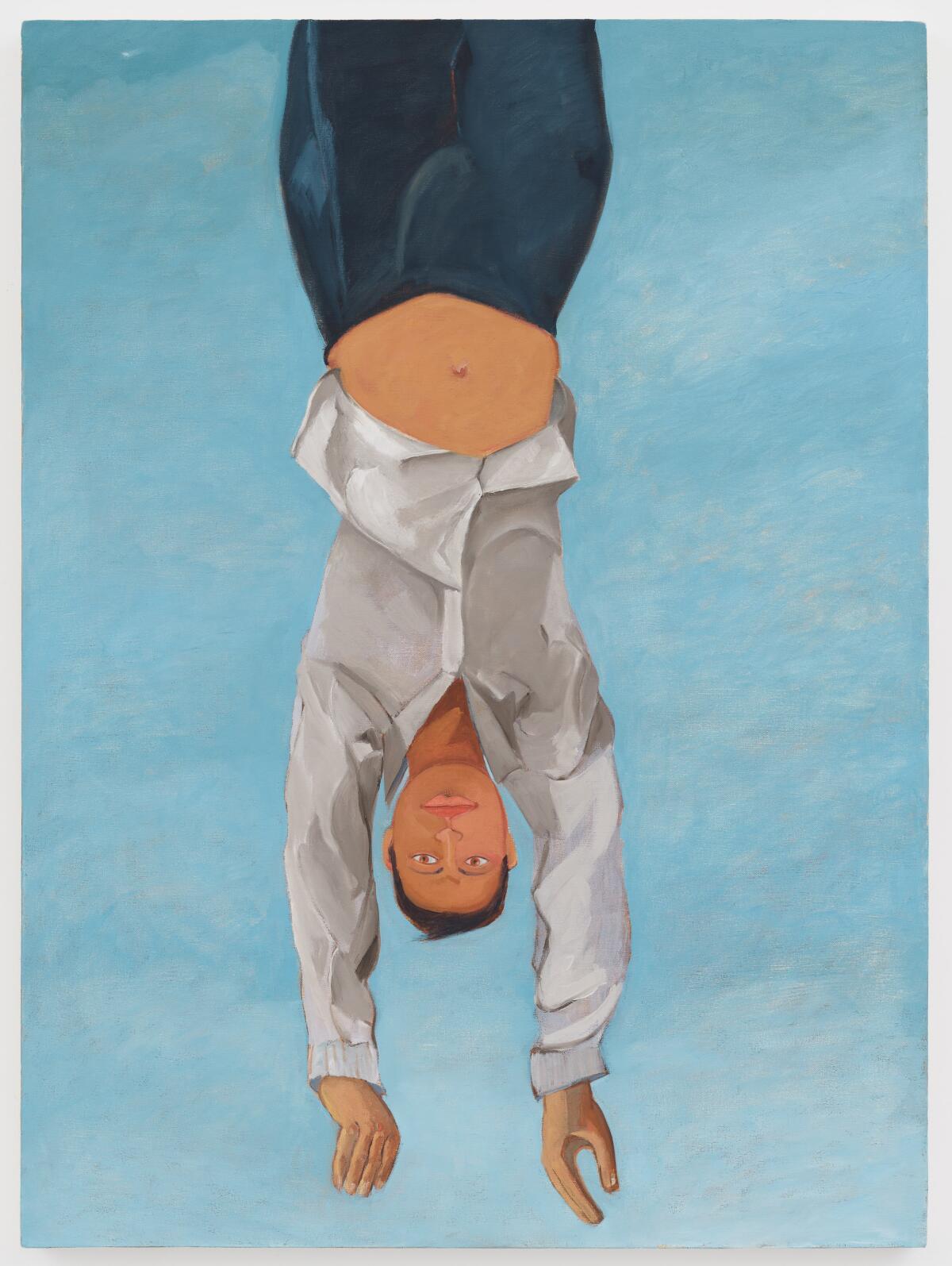
Gil de Montes was born in Guadalajara, but lived in L.A. starting at the age of 13. He had regular, well-reviewed exhibitions at galleries such as Lora Schlesinger and Jan Baum. About 20 years ago, he and his partner began spending more and more time in the small, coastal village in Nayarit, which he has frequented for 33 years. The extended visits grew to become permanent. “Here I don’t have any distractions,” he says. “I can spend more time with my painting. The main attraction of the day is being in the studio. I walk here and it’s 15 minutes. Everything is 15 minutes — including the ocean and the jungle.”
The remote location doesn’t mean he is disconnected. In fact, the artist’s profile seems to be growing. Last year, he joined the stable at the prominent Mexico City gallery Kurimanzutto. In May, he opened his solo show at Park View / Paul Soto, his first solo show in Los Angeles in more than three years.
Says Gil de Montes: “It’s a good time for me.”
Roberto Gil de Montes, “Eight Works,” is on view at Park View / Paul Soto through July 24, paulsoto.net.
Classical notes
Julius Eastman had a stunning rise as a composer, but was dead by the age of 50 after contending with mental health issues and homelessness. Eastman was Black and gay (openly so) and his work never avoided challenging themes. His music is now getting a revival, which includes a recent release of the 1974 composition “Femenine” by Wild Up, as well as upcoming performances of his work by the L.A. Phil and the New York Phil. In a piece that explores his own connection to Eastman, Times classical music critic Mark Swed writes: “The comet is back in sight and maybe for good.”
“If it’s wrong, it’s great,” Wild Up director Christopher Rountree said of Eastman’s complex queues. The New York Times’ Zachary Woolfe sat in as Wild Up rehearsed before a performance.
Enjoying this newsletter? Consider subscribing to the Los Angeles Times
Your support helps us deliver the news that matters most. Become a subscriber.
“Operatic excess reduced to an intensely rich sauce, served in small portions designed to leave audiences craving more.” Contributor Catherine Womack reports on “Desert In,” a streaming eight-episode miniseries that combines opera with the aesthetics of film and TV. Co-produced by Long Beach Opera and the Boston Lyric Opera, this unusual show was a collaboration between LBO’s chief creative officer James Darrah, playwright christopher oscar peña and composer Ellen Reid.
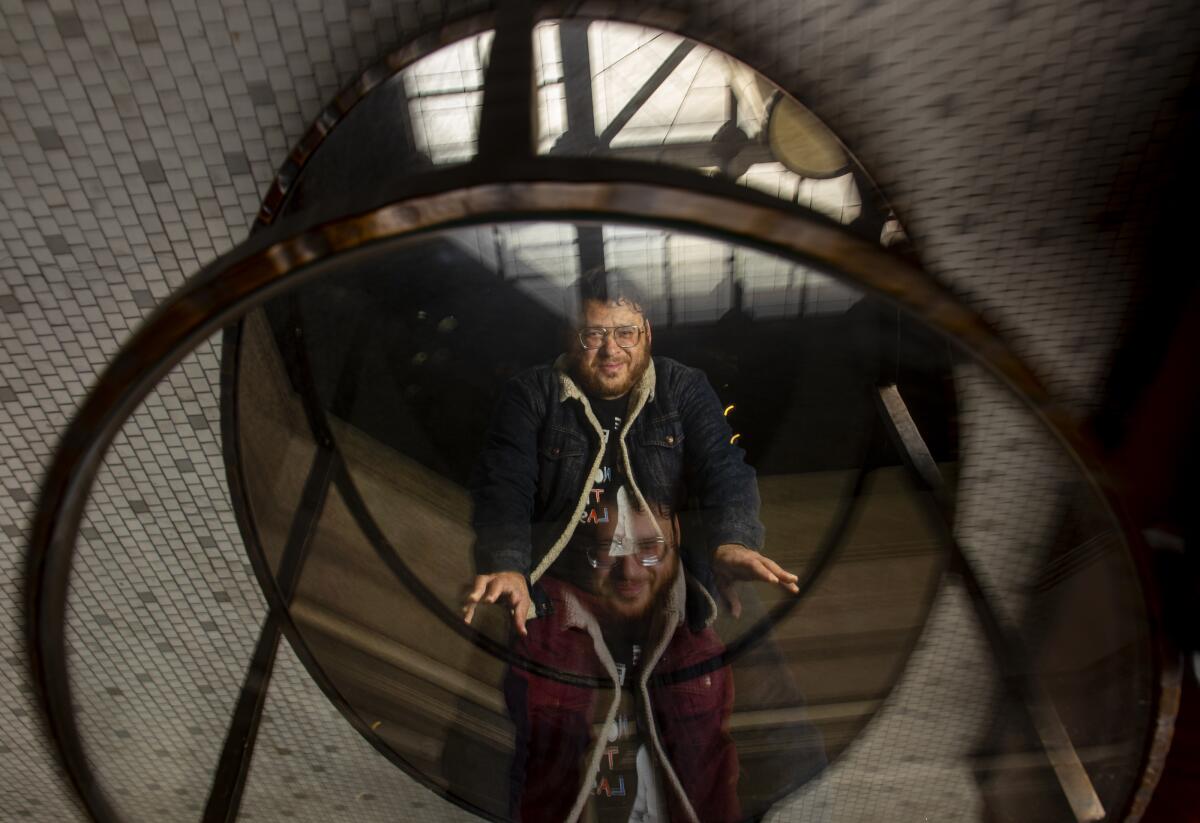
The Industry is expanding its team. The experimental opera company founded by Yuval Sharon is welcoming a pair of new co-artistic directors: interdisciplinary artist Malik Gaines and sound artist Ash Fure. The Times’ Jessica Gelt talked about the change with Sharon, whose appointment as artistic director of Michigan Opera Theatre will keep him busy with both companies. “There’s no arts organization that could look at itself the same way after the year we’ve just had,” Sharon says of The Industry. “We were taking a deep look at how we operate.”
Plays and players
The Broadway revival of “The Music Man” — starring Hugh Jackman, Sutton Foster and Jefferson Mays — is moving forward without producer Scott Rudin. But as The Times’ Ashley Lee writes: wrong time, wrong place. “What exactly are we welcoming back? Why make such great attempts to salvage this particular project in the first place?” The show “sets forth a sanitized, insular and very white America. ... It asks audiences to cheer for yet another romanticized fraud.”
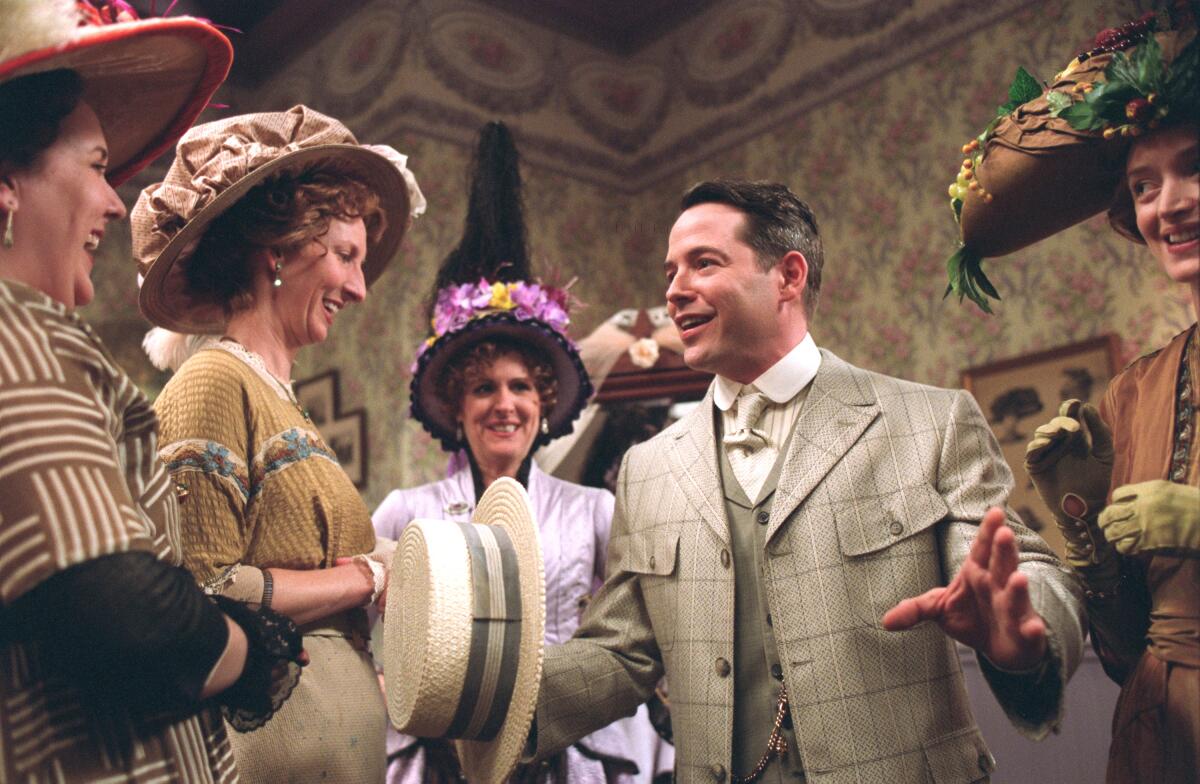
Times theater critic Charles McNulty, in the meantime, applauds L.A.’s Fountain Theatre for staging its IRL comeback with a production of Branden Jacobs-Jenkins “An Octoroon.” “Where larger, better-funded theaters in Los Angeles have played it safe, the Fountain has made room for bold, boundary breaking drama,” he writes. But he would have liked to have seen stronger direction: “There’s something too straightforward in the approach to the staging ... to handle the dynamic shifts among parody, commentary and appreciation.”
Art report
To the delight of the local business improvement district, Times art critic Christopher Knight has been in Palm Springs checking out the installation of the city’s new “Forever Marilyn” statue. The 26-feet tall behemoth is based on the famous photograph of Marilyn Monroe holding down her skirt over a subway grate. Knight is not a fan and finds it especially distasteful landing amid LGBTQ Pride Month. “The aim is to saunter between a woman’s spread legs, look up her billowing dress and snicker at her panty-clad crotch — or, better yet, snap a photo for posting on social media,” he writes. “This adolescent sculptural trash is presented as a welcome draw for desert resort tourism, battered during the COVID-19 pandemic.”
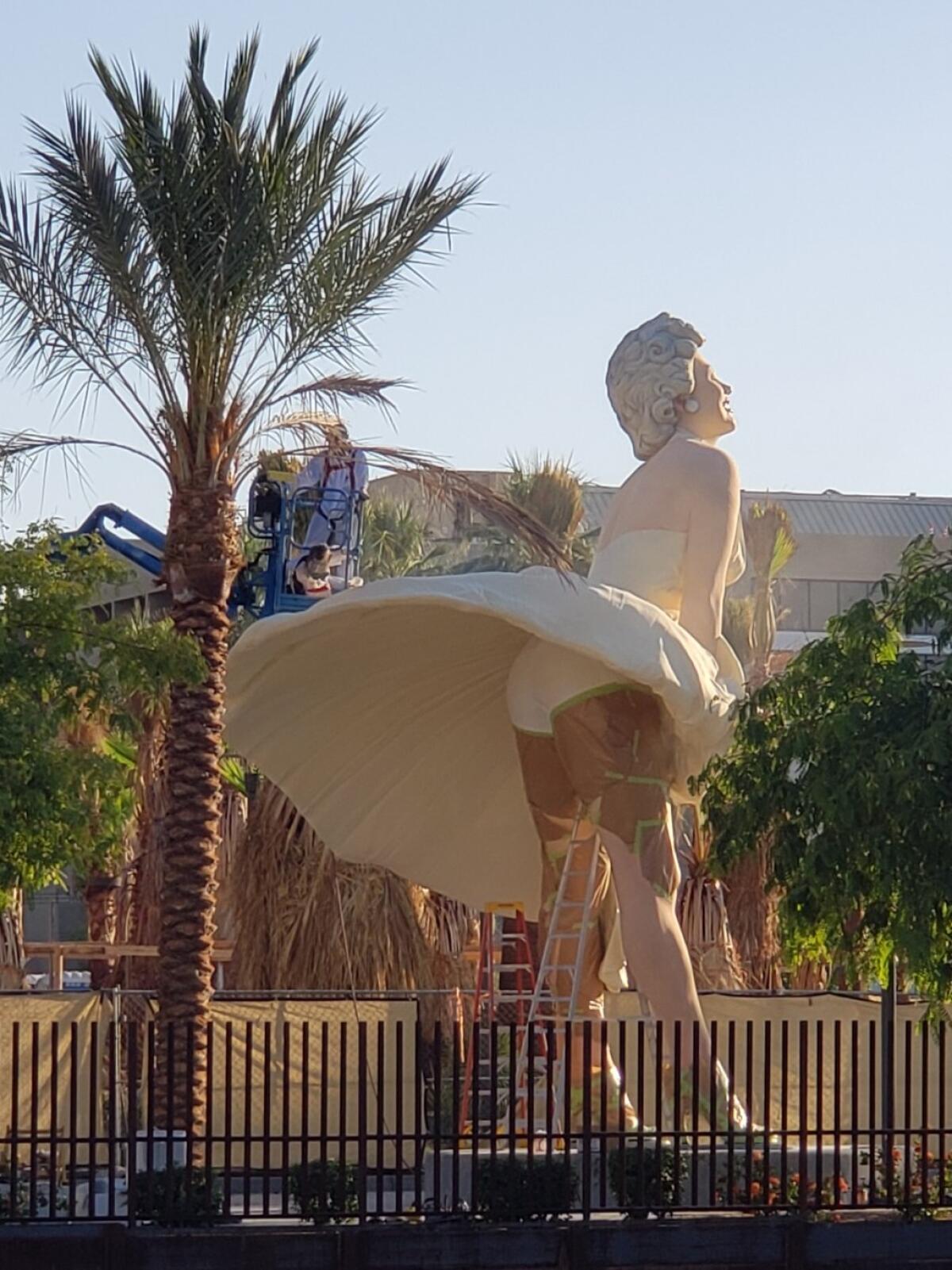
Speaking of Palm Springs, the Palm Springs Art Museum has named a new executive director: Adam Lerner, who is joining the institution from the Museum of Contemporary Art Denver. Hope he likes “sculptural trash,” ’cuz guess what’s right in the museum’s line of sight?
Essential happenings
It’s the weekend and essential things are happening. Matt Cooper has a list of 10 great things to do, including the opening of artist Ron Athey‘s solo show at the ICA LA and a streamed performance by La Santa Cecilia from the Hollywood Bowl on Saturday night.
Make the most of L.A.
Get our guide to events and happenings in the SoCal arts scene. In your inbox once a week.
You may occasionally receive promotional content from the Los Angeles Times.
Following Mark Swed’s and Alex Ross’ reviews of the live presentation of L.A. Opera’s “Oedipus Rex,” I tuned into the streamed version (which is f-r-e-e). The opera, a rather stripped-down work composed by Igor Stravinsky in 1927, featured stirring performances by Russell Thomas and J’Nai Bridges. But since this marked L.A. Opera’s cautious post-pandemic comeback, the performance was sung, not staged. To make up for the lack of action, the collective Manual Cinema produced a series of shadow puppet sequences that made the virtual version of the story truly come alive. (Or dead, because, well ... Greek tragedy.) The stream is available until July 18. Do not miss.
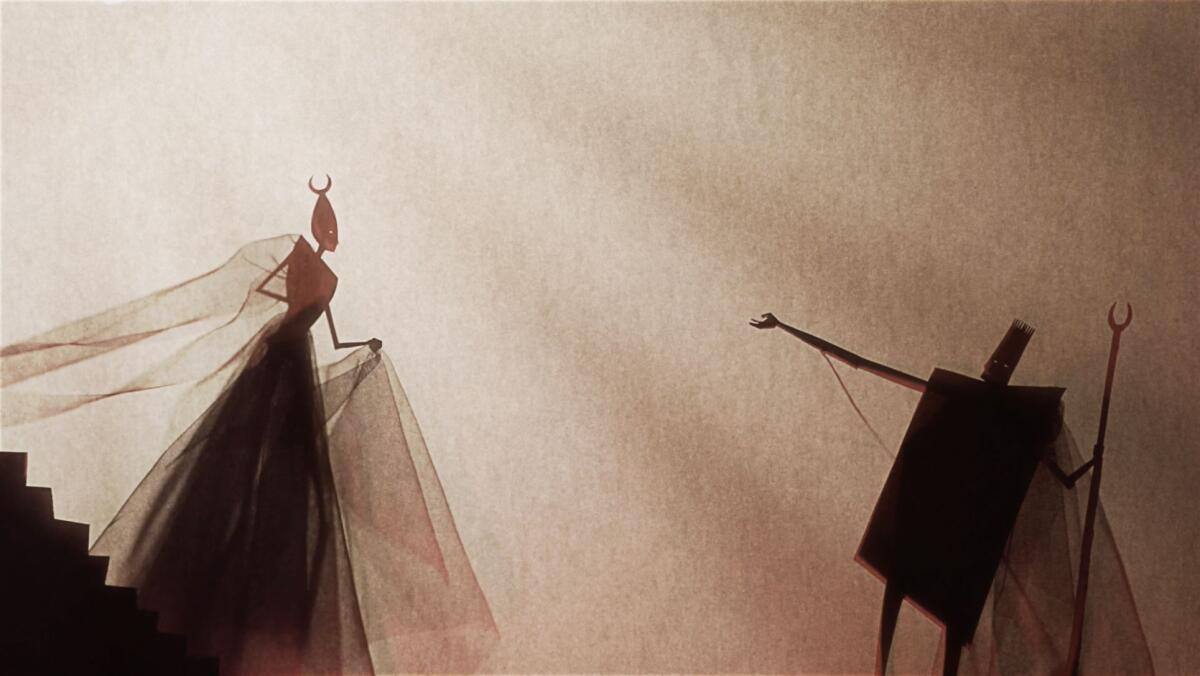
Mark your calendars: the Gallery Association Los Angeles is planning its first gallery weekend. It will be going down July 28 through Aug 1. Everything gets rolling on Peruvian independence day, so I hope everyone will be well-stocked with papas a la huancaína.
Passages
Stage and screen actor Ann Willis Ratray, who appeared on Broadway alongside Angela Lansbury in “Mame” in 1968 and later became a beloved acting coach, has died at 81.
Karl Wirsum, a Chicago artist who was a founder of the informal and humorously subversive artist group Hairy Who, and whose range of influences included everything from comic books to medieval painting, is dead at 81. “Mr. Wirsum’s achievement rested on his highly original synthesis of multiple sources — high and low, ancient and modern, East and West — and his fusion of organic and geometric forms,” writes critic Roberta Smith in her New York Times obit. “His figures almost inevitably combine a kinetic exuberance with something more sinister.”
In other news
— KCET has a good new doc on Corita Kent and the significance of her work as a printmaker.
— I dig this photo essay of L.A.’s hand-painted signs and murals by Samanta Helou Hernandez.
— An interesting interview with architecture critic Alexandra Lange about mall design, kid design and the ways in which design (and criticism) can overlook constituencies like teen girls.
— “A gorgeous, glowing object that transforms itself over the course of the day and into the night, and makes the process of looking at art a sheer pleasure.” Mark Lamster reviews Steven Holl‘s new building for the Museum of Fine Arts, Houston.
— Richard Meier, architect of the Getty Center, is retiring from the firm he founded, which has been renamed Meier Partners. The architect had withdrawn from his office in 2018, after the New York Times reported on sexual harassment allegations against him.
— Boomers and millennials gonna need to chill, because the L.A. Phil has released its 2021-22 lineup, and it includes a Gen-X festival organized by Thomas Adès. Also on the lineup: gigs from the Power to the People! festival, which had been canceled by the pandemic.
— The American Museum of Natural History in New York has voted to remove a statue of Theodore Roosevelt flanked by a Native American man and an African man.
— Eighty years after he created it, Diego Rivera‘s portable mural “Pan American Unity” is getting a major showing at SFMOMA.
— The New York Times’ Jon Caramanica has a smart convo with writers Isabelia Herrera, Sandra Garcia and Lena Wilson about “In the Heights.”
— For Gen Z, Lin-Manuel Miranda represents millennial cringe, writes Meha Razdan.
— The golden age of discos.
And last but not least ...
Set aside 30 minutes and listen to this stunning, intensely personal piece by my colleague Cindy Carcamo about how a family separation — however well intentioned — can forever fracture familial bonds.
The biggest entertainment stories
Get our big stories about Hollywood, film, television, music, arts, culture and more right in your inbox as soon as they publish.
You may occasionally receive promotional content from the Los Angeles Times.





